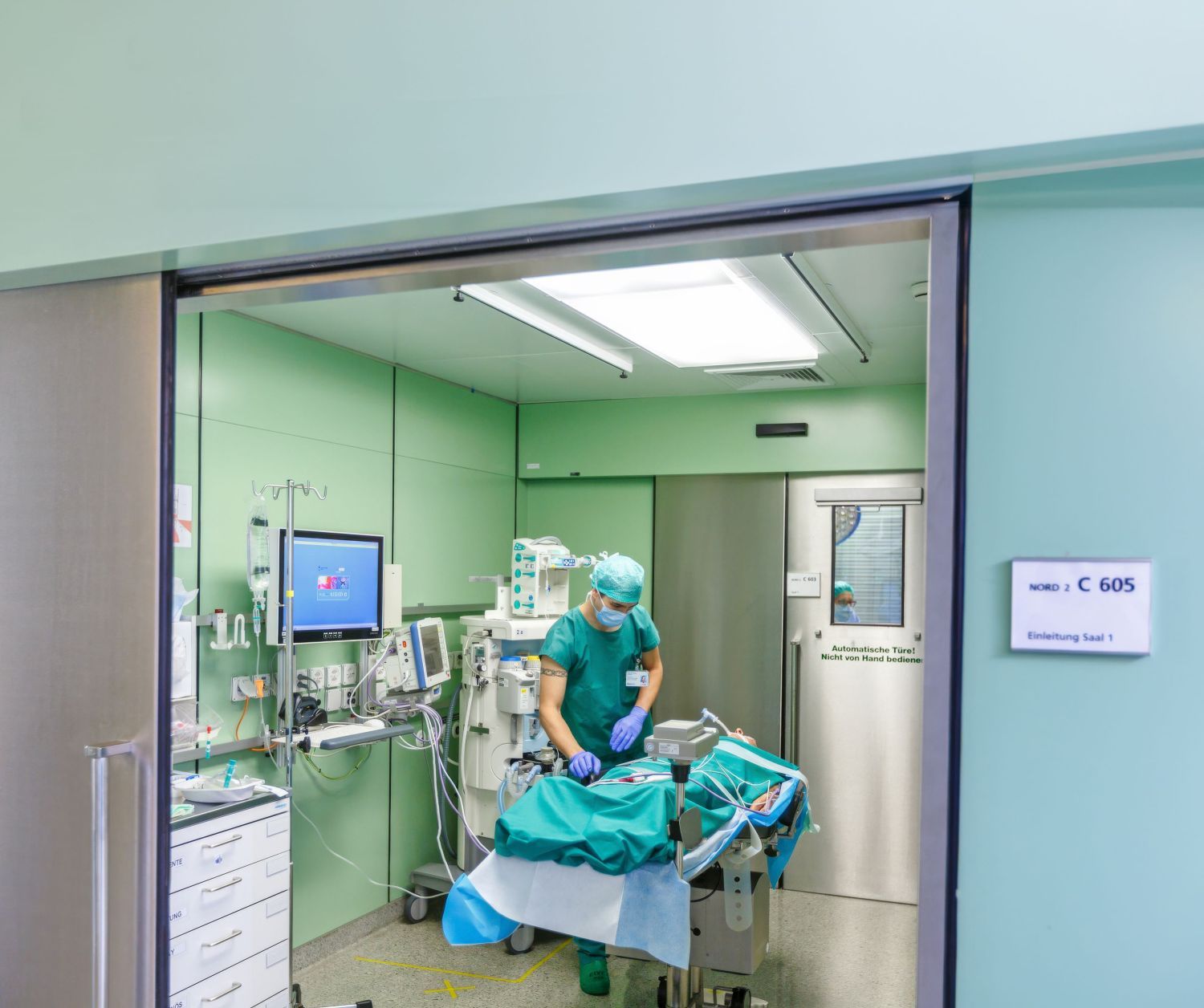They are used to induce unconsciousness, muscle relaxation and insensitivity to pain. At the same time, anesthetic gases are highly potent greenhouse gases. The USZ is committed to a further reduction.
Many people have to undergo surgery in the course of their lives. Modern medicine uses various forms of anesthesia to ensure that people do not feel any pain during the operation. Depending on the type of procedure, the anesthesiologist will suggest regional anesthesia, general anesthesia or analgosedation in order to guide the patient through the surgical procedure without pain. Anesthetic gases are substances that were used at the USZ until a few years ago to produce anesthesia (Greek anaisthesis, “numbness”) during surgical procedures. These gases, also known as inhalation anesthetics, lead to a reversible loss of consciousness in the patient. They work by influencing the central nervous system and inhibiting the transmission of nerve impulses. These include those associated with pain sensations.
“We not only select the best possible anesthesia procedure for our patients, but also always think about the environment.”
Another advantage is the good controllability of the anesthesia: the patient only remains under general anesthesia for the necessary duration and regains consciousness shortly after the end of the operation. In recent years, however, inhaled anesthetics such as desflurane, sevoflurane, isoflurane or nitrous oxide have been increasingly called into question, particularly in the case of general anesthesia.
15,000 kilometers in seven hours
Inhaled anesthetic gases have a non-negligible disadvantage: desflurane, isoflurane and sevoflurane are strong greenhouse gases and therefore extremely harmful to the environment. Desflurane, for example, is 2540 times, isoflurane 510 times and sevoflurane even 130 times more climate-active than CO². A more concrete comparison: the environmental impact caused by a seven-hour anesthesia with desflurane is roughly equivalent to a 15,000-kilometer drive in a gasoline-powered car.
Hospitals cause greenhouse gas emissions in various areas. The entire healthcare sector accounts for around seven percent of national CO² emissions. In addition to anesthetic gases, medicines and disposable instruments, cooking meals for thousands of people, for example, also produces greenhouse gases. A few years ago, the Department of Medical Technology and Anesthesiology at the USZ set itself the goal of reducing the institute’s ecological footprint. Because the problem of the climatic activity of inhaled anaesthetic gases has been recognized for some time, particular attention has been paid to their use.

